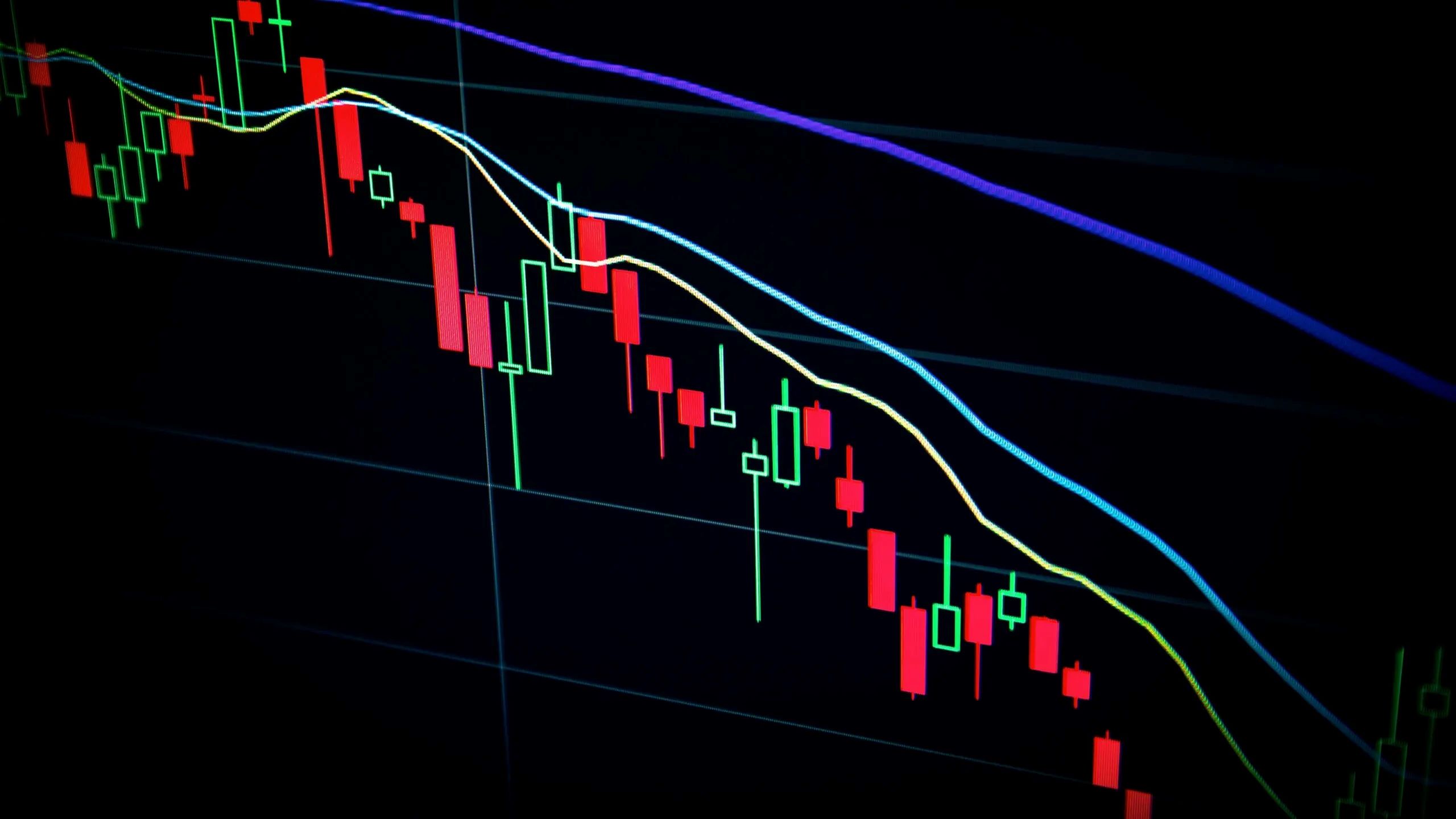Introduction
Welcome to the world of cryptocurrencies, where the market ebbs and flows like a turbulent ocean. If you’ve recently visited the popular online community Reddit, you might have come across discussions about the decline of the crypto market. From Bitcoin to altcoins, it seems like the prices are in a constant downward spiral. But why is crypto down, according to Reddit users?
The crypto market has been a rollercoaster ride of gains and losses in recent times. What was once a realm of extraordinary wealth accumulation has now become a source of frustration for many investors. The decline has sparked intense debates and speculation, often fueled by emotion and frustration. However, it’s important to take a step back and analyze the factors that contribute to this decline.
In this article, we will delve into the various reasons why the crypto market is down, as discussed by the Reddit community. By exploring these factors, we hope to gain a better understanding of the current state of the market and what may lie ahead for cryptocurrency investors.
The Crypto Market in Recent Times
The crypto market has experienced significant volatility in recent times, with prices fluctuating wildly. This volatility has attracted both seasoned investors and newcomers looking to capitalize on the potential gains. However, it has also led to uncertainty, fear, and frustration within the market.
One of the main contributing factors behind the current state of the crypto market is the growing awareness and adoption of cryptocurrencies. As more individuals and businesses enter the market, the demand for cryptocurrencies increases. This surge in demand has led to a proliferation of new cryptocurrencies, commonly referred to as altcoins, further diversifying the market.
While the diversification of the market may seem like a positive development, it has also introduced more uncertainty and risk. With hundreds of altcoins being traded, it becomes difficult for investors to accurately assess the value and potential of each cryptocurrency. This lack of clarity can lead to speculation and market manipulation, exacerbating volatility.
In addition to the growing number of cryptocurrencies, the crypto market has also been influenced by various technological and development-related issues. Blockchain, the underlying technology behind cryptocurrencies, is still in its early stages of adoption. As a result, it faces scalability challenges and potential security vulnerabilities. These technical limitations can impact the functionality and performance of cryptocurrencies, leading to market uncertainty.
Furthermore, the regulatory landscape surrounding cryptocurrencies has also played a significant role in shaping the market. Governments around the world have been grappling with how to regulate and oversee the crypto industry. This regulatory uncertainty has created a sense of unease among investors, as regulations could drastically impact the value and usability of cryptocurrencies.
Overall, the crypto market in recent times has been characterized by volatility, market diversification, technological challenges, and regulatory uncertainties. These factors have contributed to the current decline observed in the market. However, it’s important to note that market cycles are a natural part of any financial asset, and the crypto market is no exception.
In the following sections, we will delve deeper into the specific factors discussed by Reddit users that have influenced the decline of the crypto market.
Exploring the Factors behind the Market Decline
The decline in the crypto market can be attributed to a multitude of factors, each playing a role in shaping the market’s trajectory. Reddit users have highlighted several significant factors that have contributed to the recent market decline.
One factor is investor sentiment and market psychology. Psychological factors such as fear, greed, and uncertainty can greatly influence how investors perceive and react to market conditions. When there is a general sense of negativity or panic in the market, investors may sell off their holdings, causing prices to plummet. Conversely, when there is excessive optimism, it can lead to an unsustainable price bubble.
Regulatory crackdowns and bans have also impacted the crypto market. Governments and regulatory bodies have become increasingly concerned about the potential risks associated with cryptocurrencies. As a result, they have implemented stricter regulations, imposed bans, and cracked down on illegal activities within the crypto space. These actions have created uncertainty and hindered the growth and adoption of cryptocurrencies.
Market manipulation by large investors, often referred to as whales, is another factor influencing market decline. Whales are individuals or entities with significant cryptocurrency holdings that have the power to manipulate prices by buying or selling large amounts. By strategically executing trades, they can create artificial price movements that can trigger panic or euphoria in the market.
Furthermore, external events and global economic conditions can have a profound impact on the crypto market. Economic downturns, geopolitical tensions, and major news events can all create market volatility. Cryptocurrencies, being a relatively new and speculative asset class, are particularly sensitive to these external events.
Bitcoin volatility and dependence on altcoins are additional factors to consider. Bitcoin, as the largest and most well-known cryptocurrency, often sets the tone for the overall market. When Bitcoin experiences significant price fluctuations, it tends to influence the prices of other cryptocurrencies. Additionally, the excessive reliance on altcoins, which are often more speculative and have less proven track records, can contribute to market instability.
Technological factors and development issues also play a role in the market decline. Cryptocurrencies rely on complex technology, and any significant technological issues or vulnerabilities can undermine investor confidence. Moreover, the slow progress in addressing scalability and usability challenges within the blockchain ecosystem can dampen enthusiasm and hinder broader adoption.
Last but not least, the role of media and the spread of FUD (Fear, Uncertainty, and Doubt) should not be underestimated. Media outlets often sensationalize negative news or rumors, amplifying market panic and leading to a snowball effect. FUD campaigns can manipulate public sentiment, causing investors to make irrational decisions based on misleading or false information.
In summary, the decline in the crypto market is a result of various interconnected factors. These include investor sentiment, regulatory actions, market manipulation, external events, Bitcoin volatility, altcoin dependence, technological challenges, and media influence. Understanding these factors can provide valuable insights into the market dynamics and help investors navigate the volatile crypto landscape.
Investor Sentiment and Market Psychology
Investor sentiment and market psychology play a crucial role in shaping the direction of the crypto market. The emotions and behaviors of investors can significantly impact the prices of cryptocurrencies, leading to market trends and volatility.
One of the primary emotions that drive investor sentiment is fear. In times of market decline or uncertainty, fear can drive investors to sell their holdings, fearing further losses. This selling pressure can cause prices to plummet even further. The fear of missing out, also known as FOMO, can also drive irrational buying behavior when prices are soaring, leading to potential price bubbles.
Greed is another powerful emotion that can influence investor sentiment. When prices are rapidly rising, investors may become greedy, hoping to capitalize on quick gains. This can lead to speculative buying and inflated prices. However, when the market corrects itself, greed can quickly turn into panic, causing a cascade of sell orders and a decline in prices.
Uncertainty is a significant driver of investor sentiment in the crypto market. The volatile and relatively nascent nature of cryptocurrencies can create a sense of uncertainty among investors. They may question the future value, regulation, and adoption of cryptocurrencies, leading to cautious or hesitant investment decisions.
Market psychology also encompasses herd mentality, the tendency for investors to follow the crowd. When a significant number of investors are buying or selling a particular cryptocurrency, others may feel compelled to do the same. This herd behavior can amplify price movements and create market trends, even if they are not necessarily based on fundamental factors.
Psychological biases, such as confirmation bias and cognitive dissonance, also influence investor sentiment. Confirmation bias leads investors to seek information that confirms their existing beliefs or biases, often ignoring contradictory evidence. Cognitive dissonance, on the other hand, causes investors to rationalize their investment decisions, even in the face of unfavorable outcomes.
It’s important to acknowledge the role that investor sentiment and market psychology play in the crypto market. Emotions and biases can create market dynamics that may not always align with the underlying fundamentals of cryptocurrencies. Understanding investor sentiment can help investors make more informed decisions and navigate the market more effectively.
In the next section, we will explore the impact of regulatory crackdowns and bans on the crypto market.
Regulatory Crackdowns and Bans
The crypto market has faced increasing regulatory scrutiny from governments and regulatory bodies around the world. While the intention behind regulations is to protect investors and maintain financial stability, the impact on the crypto market has been significant.
Regulatory crackdowns and bans on cryptocurrencies can create uncertainty and fear among investors. Governments have taken various approaches to regulate the crypto industry, ranging from implementing strict Know Your Customer (KYC) and Anti-Money Laundering (AML) policies to outright bans on certain activities.
One of the main concerns of regulators is the potential for cryptocurrencies to be used for illegal activities, such as money laundering and terrorism financing. To address these concerns, many countries have introduced regulations that require cryptocurrency exchanges and other service providers to implement robust KYC and AML procedures. While this may enhance transparency and reduce illicit activities, it also adds complexity and regulatory burden to the industry.
Some governments have gone even further and implemented bans on specific cryptocurrency-related activities. For example, China banned Initial Coin Offerings (ICOs) in 2017, citing concerns over fraud and financial risks. Similarly, several countries have banned or restricted cryptocurrency exchanges, making it challenging for investors to trade cryptocurrencies within those jurisdictions.
These regulatory actions can have a significant impact on the crypto market. They create uncertainty about the legal status and future prospects of cryptocurrencies, leading to a decrease in investor confidence. As investors become wary of potential regulatory actions or bans, it can result in a sell-off of cryptocurrencies, causing prices to decline.
However, it’s important to note that not all regulatory actions are negative for the crypto market. In some cases, regulations can provide a level of legitimacy and security for investors. By establishing clear guidelines and oversight, regulations can help build trust in the crypto industry, attracting institutional investors and fostering mainstream adoption.
Moreover, regulatory actions can also have positive implications for market stability. By deterring fraudulent activities and enhancing investor protection, regulations can contribute to a more transparent and resilient market. This, in turn, may attract more long-term investors who are looking for a safer and regulated environment.
Overall, regulatory crackdowns and bans have had a significant impact on the crypto market. While they can create uncertainty and volatility in the short term, regulations also have the potential to bring stability and legitimacy to the industry. The evolving regulatory landscape remains a crucial aspect to watch as it continues to shape the future of the crypto market.
In the following section, we will explore the role of market manipulation and whales in influencing the crypto market.
Market Manipulation and Whales
The crypto market is not immune to manipulation, and the presence of whales, individuals or entities with significant cryptocurrency holdings, can have a profound impact on market movements. The actions of these whales and other market manipulators can exacerbate volatility and contribute to the decline of the market.
One common strategy employed by market manipulators is known as pump and dump. In this scheme, a group of individuals or a single entity artificially inflates the price of a particular cryptocurrency by buying it in large quantities. This creates a sense of FOMO among other investors, causing them to jump in and buy at inflated prices. Once the price reaches a desired level, the manipulators sell off their holdings, causing the price to plummet and resulting in significant losses for unsuspecting investors.
Market manipulators can also utilize spoofing, a tactic where they place fake buy or sell orders on exchanges to deceive other market participants. By creating the illusion of increased buying or selling pressure, they can manipulate prices and trigger panic or euphoria in the market. This strategy exploits the psychological biases of investors, inducing them to make impulsive decisions based on false market signals.
Whales, due to their large holdings, have the power to move the market with their trades. By strategically buying or selling large quantities of a cryptocurrency, they can influence the supply and demand dynamics, causing prices to rise or fall. The mere anticipation of whale activity can create market speculation and impact price movements.
Another form of market manipulation is insider trading, where individuals with privileged information trade based on non-public information. Insider trading in the crypto market can be difficult to detect and regulate, as the market operates without centralized authorities or strict oversight. Instances of insider trading can fuel market manipulation and erode investor trust.
The existence of market manipulation and the dominance of whales can create a sense of uncertainty and unpredictability in the market. Investors may question the true value of cryptocurrencies if their prices are being artificially manipulated. This skepticism can lead to a decline in market participation and a decrease in trading volume.
However, efforts are being made to mitigate market manipulation and increase transparency. Some exchanges have implemented measures to detect and prevent suspicious trading activities. Regulatory bodies are also working towards establishing frameworks to oversee the crypto market and protect investors from fraudulent practices.
It is important for investors to remain vigilant and skeptical of unusual market movements. Conducting thorough research, diversifying investments, and being aware of potential market manipulation strategies can help investors make more informed decisions and navigate the crypto market with caution.
In the next section, we will explore the impact of external events and global economic conditions on the crypto market.
Impact of External Events and Global Economic Conditions
The crypto market is sensitive to external events and global economic conditions, and these factors can significantly influence its performance and trajectory. The interconnectedness of the global economy means that events and conditions beyond the crypto realm can have repercussions on the market.
One external event that can impact the crypto market is economic downturns. When there is a recession or financial crisis, investors may adopt a risk-off mentality and withdraw from more speculative assets, including cryptocurrencies. This can result in a sell-off and a decline in crypto prices.
Geopolitical tensions and major news events can also create volatility in the crypto market. Political uncertainties, such as trade wars or terrorist attacks, can spook investors and lead to market panic. Additionally, significant announcements or developments in the crypto industry, such as regulatory decisions or high-profile hacks, can cause market fluctuations.
Global economic conditions, such as interest rates, inflation rates, and currency fluctuations, can indirectly impact the crypto market. Changes in these economic indicators can influence investor sentiment and risk appetite, thereby affecting investment decisions in cryptocurrencies.
Cryptocurrencies are often touted as a hedge against traditional financial assets, such as stocks or fiat currencies. During periods of economic instability, some investors turn to cryptocurrencies as a safe haven or alternative investment. This increased demand can drive up crypto prices. Conversely, during times of economic prosperity, investors may be more inclined to allocate their funds towards more traditional investments, leading to a decline in crypto prices.
External events and economic conditions can also affect institutional adoption and regulatory decisions related to cryptocurrencies. The stance of governments and regulatory bodies towards cryptocurrencies is influenced by broader economic and political factors. Regulatory actions or announcements can create uncertainty or stability in the crypto market, impacting investor sentiment and prices.
It is important for crypto investors to stay informed about external events and global economic conditions that could potentially impact the market. Keeping track of major news events, economic indicators, and geopolitical developments can provide insights into potential market trends and volatility.
Understanding the relationship between the crypto market and external events can help investors make more informed decisions and manage risk effectively. However, it’s important to note that the crypto market is also influenced by internal dynamics and technological advancements, as we will discuss further in the subsequent sections.
Bitcoin Volatility and Altcoin Dependence
Bitcoin, as the pioneering cryptocurrency, has a significant influence on the overall crypto market. Its price movements can set the tone for other cryptocurrencies, and its inherent volatility can contribute to the volatility of the market as a whole.
Bitcoin’s volatility is one of the main factors behind the market decline. The price of Bitcoin can experience rapid and significant fluctuations within short periods of time. These price swings can be driven by various factors such as investor sentiment, market manipulation, regulatory actions, or even major news events.
When Bitcoin’s price drops, it often triggers a domino effect on the prices of other cryptocurrencies. This phenomenon is known as the altcoin dependence on Bitcoin. Many altcoins, which are alternative cryptocurrencies other than Bitcoin, are often traded against Bitcoin pairs on major exchanges. When Bitcoin experiences a decline, traders may choose to convert their altcoins into Bitcoin, causing altcoin prices to decline as well.
Altcoin dependence on Bitcoin also arises from market psychology and investor behavior. Bitcoin is widely regarded as the leading cryptocurrency and a benchmark for the entire market. Consequently, movements in the price of Bitcoin can create a ripple effect, influencing the sentiment and trading decisions of investors across the market.
This dependence on Bitcoin can exacerbate market volatility, especially when combined with factors like low trading volumes or market manipulation. It can create a self-reinforcing cycle where downward price movements in Bitcoin lead to selling pressure on altcoins, causing further declines in prices.
However, as the crypto market matures and evolves, there have been efforts to reduce the altcoin dependence on Bitcoin. Some exchanges have introduced cryptocurrency pairs that do not involve Bitcoin, allowing investors to trade altcoins directly against fiat currencies. This provides more flexibility and independence for altcoins, allowing their prices to be influenced by their own unique factors.
Moreover, the development of decentralized exchanges (DEX) and the emergence of stablecoins, which are cryptocurrencies pegged to stable assets like fiat currencies, aim to further reduce the reliance on Bitcoin. These developments provide alternative trading options and liquidity for cryptocurrencies, independent of Bitcoin’s movements.
As the crypto market continues to evolve, altcoins may start to assert their own value propositions and become less reliant on Bitcoin’s price movements. This would potentially lead to a more diversified and resilient market, offering investors a broader range of investment options.
In the next section, we will explore technological factors and development issues that have impacted the crypto market.
Technological Factors and Development Issues
The technological aspects and development landscape of cryptocurrencies play a significant role in shaping the market. Technological factors and development issues can both positively and negatively impact the crypto market, contributing to its overall performance and trajectory.
One of the key technological factors influencing the crypto market is the scalability challenge of blockchain technology. As more users and businesses adopt cryptocurrencies, the demand for transactions increases, putting strain on the blockchain network. This can result in slower transaction speeds and higher fees, affecting the usability and efficiency of cryptocurrencies.
Additionally, security vulnerabilities within the blockchain ecosystem can undermine investor confidence. While blockchain technology itself provides enhanced security through its decentralized nature, vulnerabilities in specific implementations or smart contracts can expose cryptocurrencies to hacking or cyber-attacks. Instances of high-profile hacks or security breaches have led to market downturns and a loss of trust among investors.
Development issues within the crypto industry have also impacted the market. The ongoing development and innovation in the crypto space can be complex and time-consuming. Delays or setbacks in the implementation of new features or upgrades can lead to market uncertainties and frustrations among investors.
Furthermore, the lack of regulatory clarity and standardization in the development of cryptocurrencies can hinder market growth. The absence of consistent guidelines and best practices can create confusion among developers and investors, hindering broader adoption and regulatory acceptance.
However, it’s important to note that the crypto market has also witnessed significant technological advancements. For example, the emergence of second-layer scaling solutions, such as the Lightning Network, aims to address the scalability challenge of blockchain technology by facilitating faster and cheaper transactions.
The development of interoperability protocols, which enable different blockchains to interact with one another, also holds promise for enhancing the functionality and usability of cryptocurrencies. These technological developments can improve the user experience and expand the potential use cases of cryptocurrencies, ultimately driving market growth.
Additionally, the ongoing research and development in areas like privacy, consensus mechanisms, and governance systems are expected to shape the future of cryptocurrencies. Advancements in these areas can address existing limitations and offer innovative solutions, contributing to the long-term viability and stability of the crypto market.
Despite the technological challenges and development issues, the crypto market remains a dynamic and evolving ecosystem. Continuous efforts are being made to address these challenges and propel the industry forward, enhancing the overall efficiency, security, and usability of cryptocurrencies.
In the next section, we will explore the role of media and FUD (Fear, Uncertainty, and Doubt) in shaping the crypto market.
The Role of Media and FUD (Fear, Uncertainty, and Doubt)
The media plays a significant role in shaping public perception and influencing market sentiment, and this is especially true in the volatile and fast-paced world of cryptocurrencies. The way in which the media covers and portrays cryptocurrencies can impact investor behavior and contribute to market fluctuations.
The media has the power to amplify positive or negative news and events, which can create a sense of excitement or panic among investors. Positive coverage, such as stories of individuals who have made substantial gains from investing in cryptocurrencies, can generate FOMO (Fear of Missing Out) and spur increased investment. Conversely, negative coverage can sow doubt and fear in the minds of investors, leading to selling pressure and a decline in prices.
FUD, which stands for Fear, Uncertainty, and Doubt, is a term often used in the crypto community to describe the spread of negative or misleading information. FUD can originate from various sources, including media outlets, social media, or even individuals with vested interests. The purpose of FUD is to create panic or uncertainty among investors, leading them to make irrational decisions based on false or exaggerated information.
The impact of media and FUD on the crypto market can be particularly strong due to the relatively young and speculative nature of cryptocurrencies. Investors may be more susceptible to emotional reactions and influenced by sensationalized news or narratives. This can result in heightened market volatility and exaggerated price movements.
However, it’s important for investors to exercise caution and critical thinking when consuming media coverage of cryptocurrencies. Not all information presented in the media is accurate or reliable. It is crucial to do thorough research and consider multiple sources before making investment decisions.
Efforts are being made to provide more balanced and accurate coverage of cryptocurrencies. The crypto community itself has taken steps to educate the public and counter FUD by providing transparent and factual information about cryptocurrencies and their underlying technology. Furthermore, the growth of alternative media platforms and independent analysts has provided investors with diversified sources of information and perspectives.
Regulatory bodies have also recognized the need to address misinformation and market manipulation. They are working towards creating guidelines and regulations to ensure fairness, transparency, and accuracy in crypto-related news reporting.
Understanding the role of media and the potential impact of FUD is crucial for crypto investors. By staying informed and maintaining a rational approach to information consumption, investors can make more informed decisions and avoid falling victim to market manipulation or unfounded fear.
In the next section, we will conclude the article by summarizing the main points discussed and providing some closing thoughts on the current state of the crypto market.
Conclusion
The crypto market is a dynamic and ever-evolving landscape that is influenced by a multitude of factors. In this article, we have explored the various reasons behind the market decline, as discussed by Reddit users. From investor sentiment and market psychology to regulatory crackdowns, market manipulation, external events, technological factors, and the role of media and FUD, it is evident that the market decline is a complex interplay of multiple forces.
Investor sentiment and market psychology can create significant volatility and drive market trends. Fear, uncertainty, and greed can all impact investor behavior and contribute to price fluctuations.
Regulatory crackdowns and bans have created uncertainty and hindered the growth and adoption of cryptocurrencies. While regulations can bring stability and legitimacy, they can also stifle innovation and dampen investor confidence.
Market manipulation and the dominance of whales can exacerbate volatility and create a sense of unpredictability in the market. The actions of market manipulators and the altcoin dependence on Bitcoin can amplify market fluctuations.
External events and global economic conditions have the potential to disrupt the crypto market. Economic downturns, geopolitical tensions, and major news events can all trigger market volatility and affect investor sentiment.
Technological factors and development issues, such as scalability challenges, security vulnerabilities, and regulatory uncertainties, can impact the functionality and perception of cryptocurrencies.
Lastly, the media and the spread of FUD can greatly influence market sentiment and contribute to market fluctuations. It is essential for investors to remain cautious and critical when consuming media coverage of cryptocurrencies.
By understanding these factors and their interconnectedness, investors can make more informed decisions and navigate the crypto market more effectively. It is important to note that market cycles are a natural part of any financial asset, and the crypto market is no exception. Despite the challenges and uncertainties, the crypto market remains a space of innovation and potential, with technological advancements and regulatory developments shaping its future.
As the crypto market continues to evolve, it is crucial for investors to stay informed, conduct thorough research, and exercise caution. By doing so, investors can better position themselves to navigate the volatile market dynamics and potential opportunities presented by cryptocurrencies.
Whether you’re a seasoned investor or a newcomer to the crypto world, it is important to stay informed, maintain a long-term perspective, and make decisions based on well-rounded analysis and understanding.

























